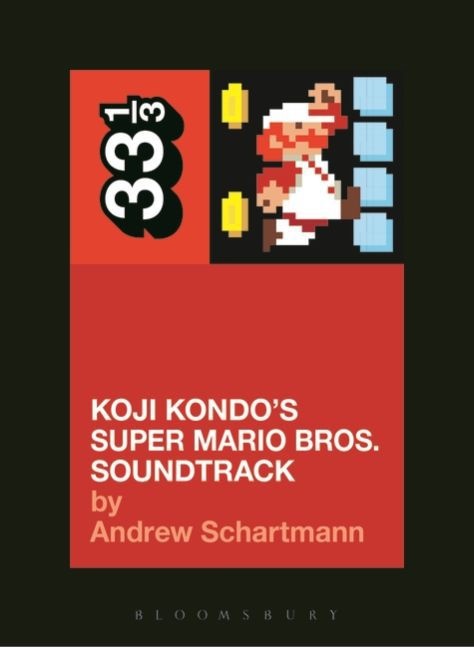Read more
Zusatztext Schartmann argues Super Mario Bros. composer Kondo transcended the medium of composition to break free from its restrictions, creating something new to be examined and improved upon … Super Mario Bros. has an enduring sonic legacy. Music is, after all, one of the great social connectors, and the infectiousness of Super Mario Bros. ’ iconic main theme is ignorant of geography’s constraints. Informationen zum Autor Andrew Schartmann is a faculty member at the New England Conservatory, USA. In 2017, he was named Audio Director of Yale’s Play4Real lab, where he produces sound and music for virtual-reality video games. He taught previously at McGill and Yale, USA, and currently serves as the Associate Editor of DSCH Journal . Klappentext Koji Kondo's Super Mario Bros. (1985) score redefined video game music. With under three minutes of music, Kondo put to rest an era of bleeps and bloops-the sterile products of a lab environment-replacing it with one in which game sounds constituted a legitimate form of artistic expression. Andrew Schartmann takes us through the various external factors (e.g., the video game crash of 1983, Nintendo's marketing tactics) that coalesced into a ripe environment in which Kondo's musical experiments could thrive. He then delves into the music itself, searching for reasons why our hearts still dance to the "primitive" 8-bit tunes of a bygone era.What musical features are responsible for Kondo's distinct "Mario sound"? How do the different themes underscore the vastness of Princess Peach's Mushroom Kingdom? And in what ways do the game's sound effects resonate with our physical experience of the world? These and other questions are explored within, through the lens of Kondo's compositional philosophy-one that would influence an entire generation of video game composers. As Kondo himself stated, "we [at Nintendo] were trying to do something that had never been done before." In this book, Schartmann shows his readers how Kondo and his team not just succeeded, but heralded in a new era of video games. Vorwort Explores how Koji Kondo’s Super Mario Bros . (1985) score redefined video game music. Zusammenfassung Koji Kondo’s Super Mario Bros. (1985) score redefined video game music. With under three minutes of music, Kondo put to rest an era of bleeps and bloops—the sterile products of a lab environment—replacing it with one in which game sounds constituted a legitimate form of artistic expression. Andrew Schartmann takes us through the various external factors (e.g., the video game crash of 1983, Nintendo’s marketing tactics) that coalesced into a ripe environment in which Kondo’s musical experiments could thrive. He then delves into the music itself, searching for reasons why our hearts still dance to the “primitive” 8-bit tunes of a bygone era.What musical features are responsible for Kondo’s distinct “Mario sound”? How do the different themes underscore the vastness of Princess Peach’s Mushroom Kingdom? And in what ways do the game’s sound effects resonate with our physical experience of the world? These and other questions are explored within, through the lens of Kondo’s compositional philosophy—one that would influence an entire generation of video game composers. As Kondo himself stated, “we [at Nintendo] were trying to do something that had never been done before.” In this book, Schartmann shows his readers how Kondo and his team not just succeeded, but heralded in a new era of video games. Inhaltsverzeichnis Forward Preface Acknowledgements INTRODUCTION CONTEXTS 1-1 An Unlikely Hero is Born 1-2 Mario Grows Up 1-3 Kondo's Compositional Philosophy 1-4 Kondo's Instruments MUSIC 2-1 Overworlds and Underworlds 2-2 The "Underwater" Waltz 2-3 Bowser's "Castle" Theme & Other Endings 2-4 Sound Effects <...

